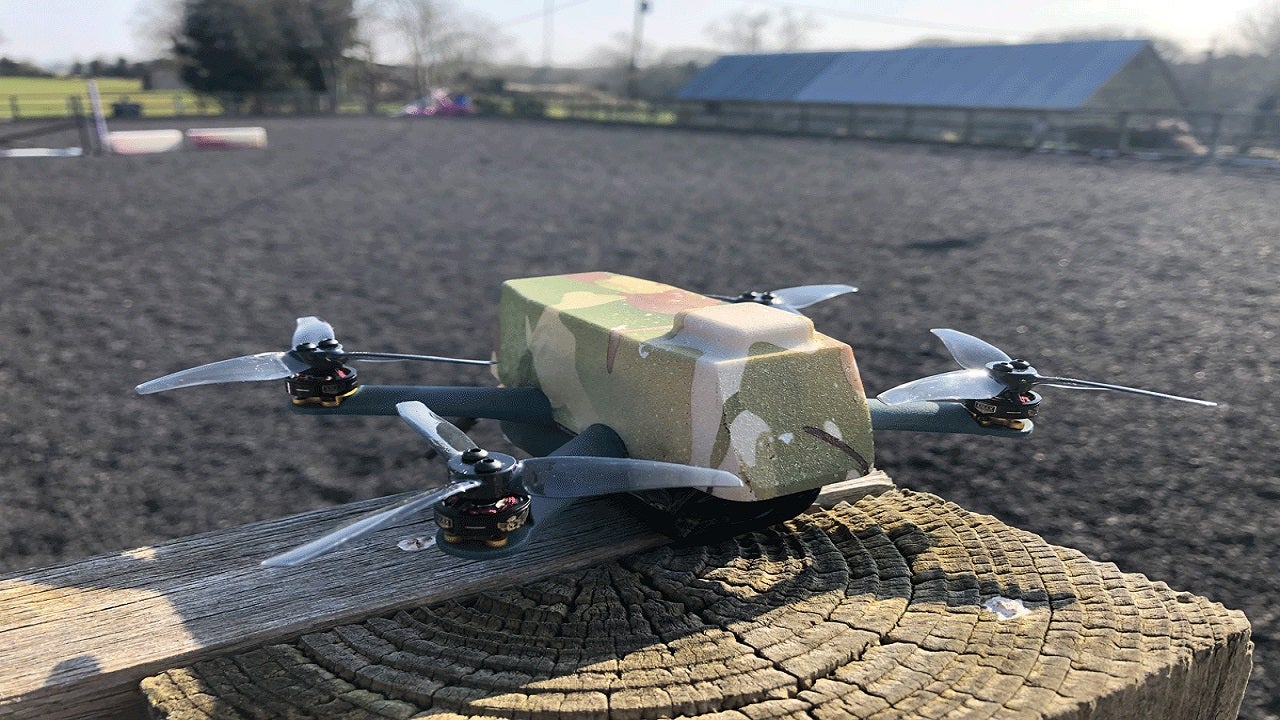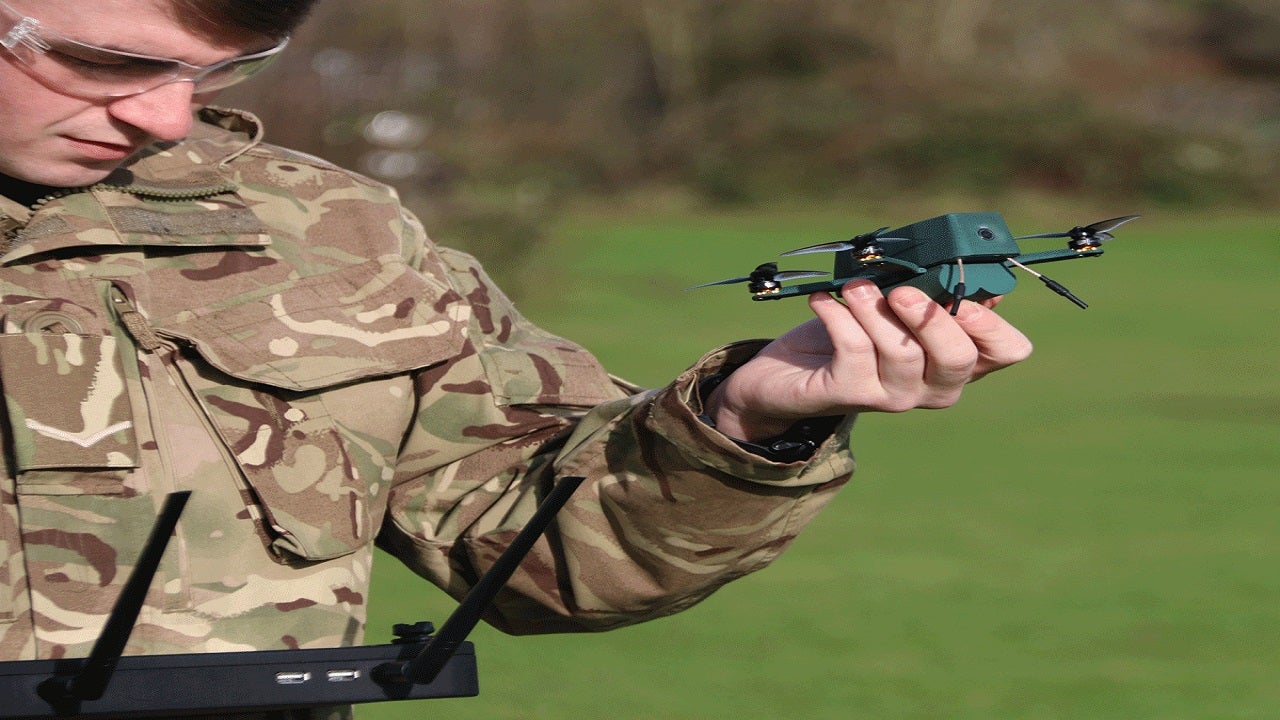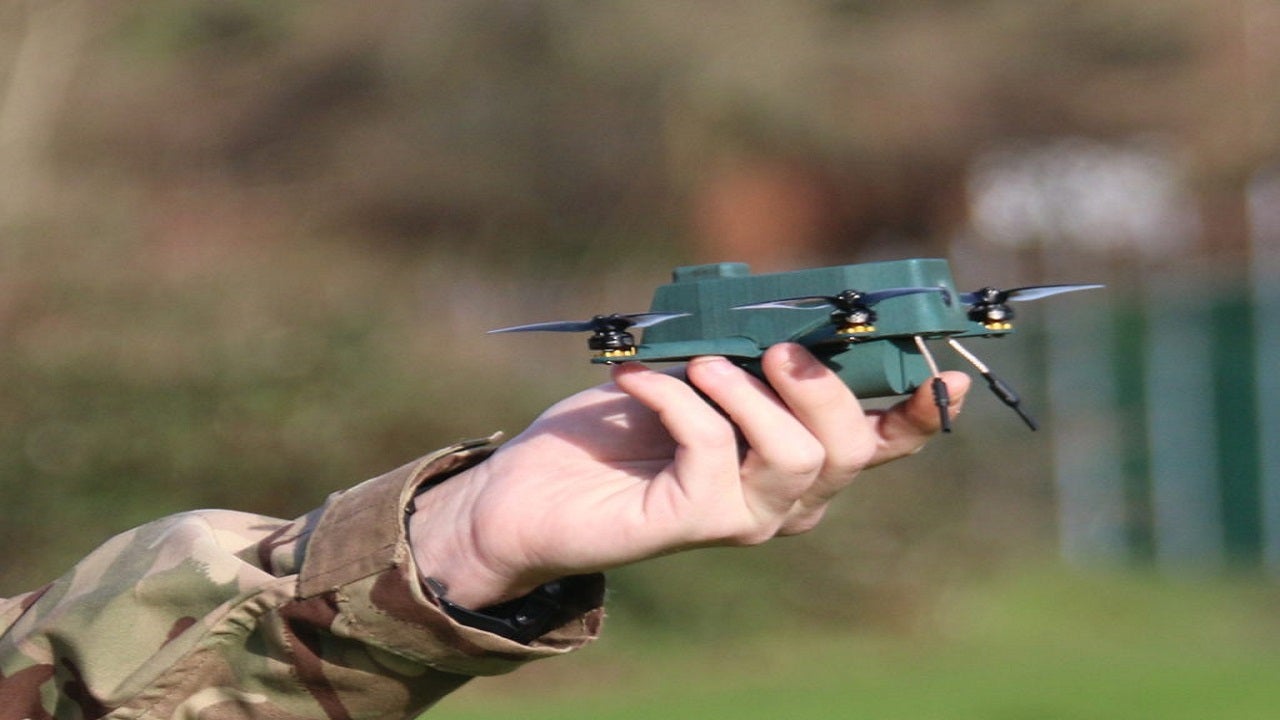The Bug nano drone is a super lightweight nano-unmanned aerial vehicle (UAV) developed by BAE Systems in collaboration with UAVTEK.
The UK Ministry of Defence (MoD) selected Bug nano drone for supporting the UK armed forces, in July 2020.
The British Army took delivery of first 30 units of Bug drones for testing in December 2020. The nano-UAV demonstrated the ability to operate in uncompromising weather conditions during a recent army warfighting experiment (AWE), an event hosted by the Ministry of Defence’s Future Capability Group.
The drone can be used for a range of missions including reconnaissance, surveillance and target acquisition. It serves as a soldier’s eye around corners or over the hills.
The developers plan to further improve the nano UAV with addition of sensing equipment and capabilities as well as integrating it with other military equipment.
Design and features of Bug nano UAV
The Bug nano drone has a gross weight of 196g which is similar to that of a smartphone. It features four robust rotors which allow it to fly in severe weather conditions including strong winds, rain and snow.
The fully autonomous drone can be easily launched from hand, ground or vehicle. It’s tiny size makes it difficult to be differentiated from birds, when operating at a certain altitude. The drone is fitted with high-resolution camera and can be equipped with infrared detection system.
The fist-sized drone can be easily transported in a box which can accommodate two Bug UAVs, four battery packs and one UAVTEK controller with antennas and accessories.
The Bug nano drone can simultaneously transmit data to multiple devices such as mobile phones, laptops, tablets and Android Team Awareness Kit (ATAK). The ready to swarm drone comes with the GPS follow the leader capability and can be integrated with advanced algorithms.
The micro drone is equipped with counter-countermeasures and can be customised based on user requirement including colour scheme, custom payloads and capabilities.
The autopilot mode can be switched from local pilot to remote pilot based on the flight operation envelope. Irrespective of the flight direction, the drone can direct the camera to a fixed position.
The nano drone offers immediate full HD situational awareness that allows the pilot as well as other operators in the network to accomplish missions more effectively as the system broadcasts data to multiple command and control platforms.
Payload of Bug nano drone
The Bug drone has a normal payload capacity of up to 50g. It also has the capability to carry payloads of up to 100g while still remaining within the 250g weight limit.
The aerial vehicle can accommodate a range of payload systems such as microphone, loudspeaker, white/infrared (IR)/red light, interchangeable lenses, mapping camera, thermal camera and distraction device.
Performance
The Bug UAV can withstand wind speeds of up to 35k with 45k gusts. It has a battery life of 40 minutes in real conditions and can stream footage back to troops on the ground.
The tiny drone can operate within a range of 2km on 5.8Ghz radio bandwidth and up to 50km on LTE. It has a maximum flight speed of 80km/h and can also operate in slower modes for training.
Bug nano drone missions
The UAV will be further developed for collecting data in the battlefield and also as a listening device. It helps the soldiers to receive warnings about the enemy movements and fortifications without sending an alert signal to the other side.
It can also be used for patrol and mapping as the system has the capability to carry out pre-planned missions and fly in fully autonomous mode.
The Bug drone can be used in urban areas due to its small footprint and the use of cellular networks allows the drone to overcome the challenge of RF disruption in urban environments.






